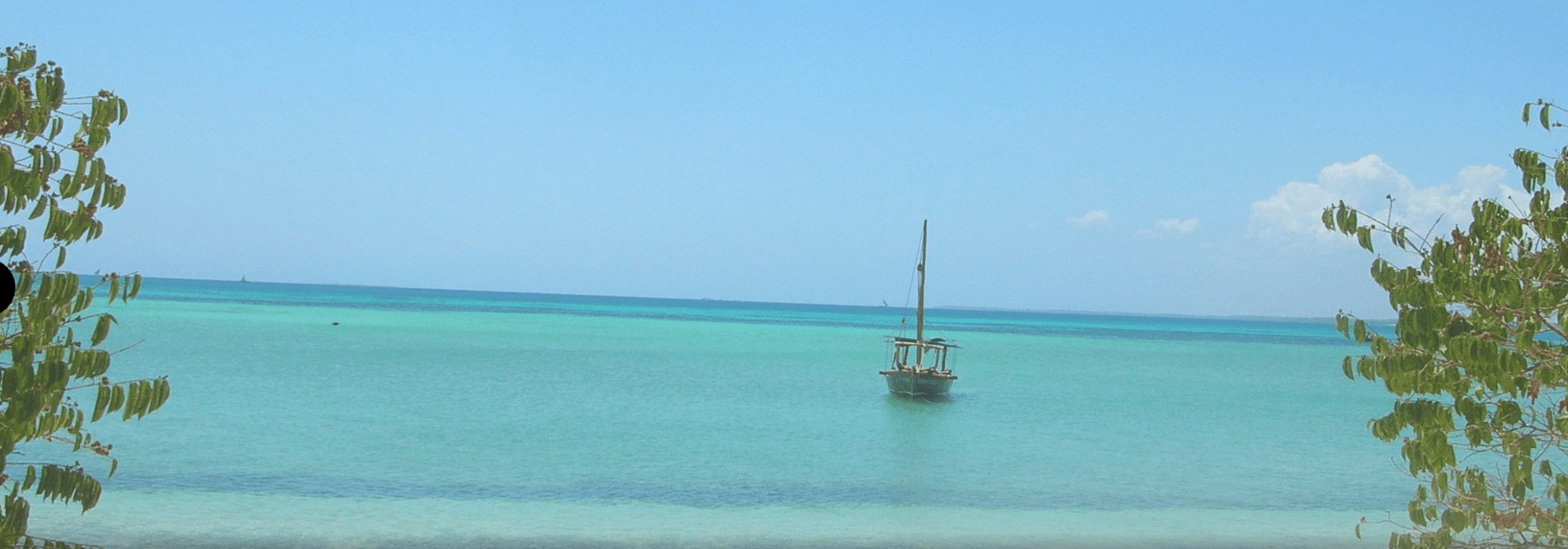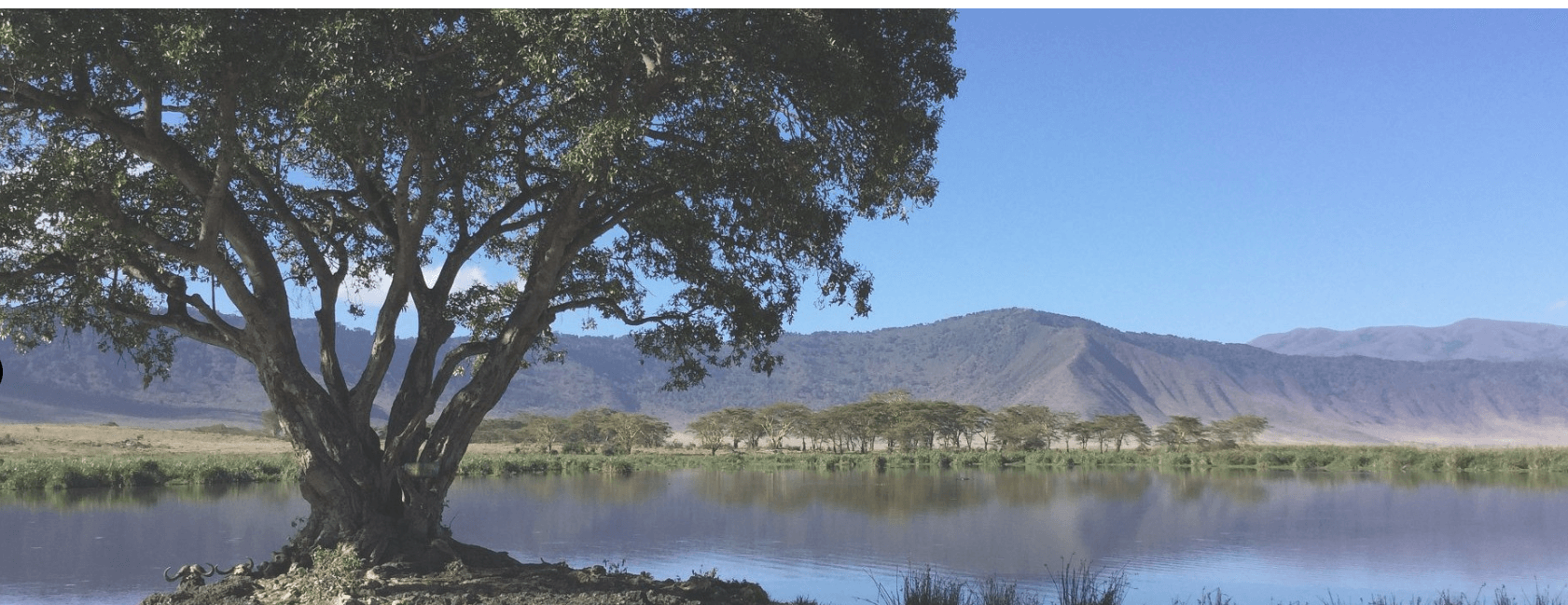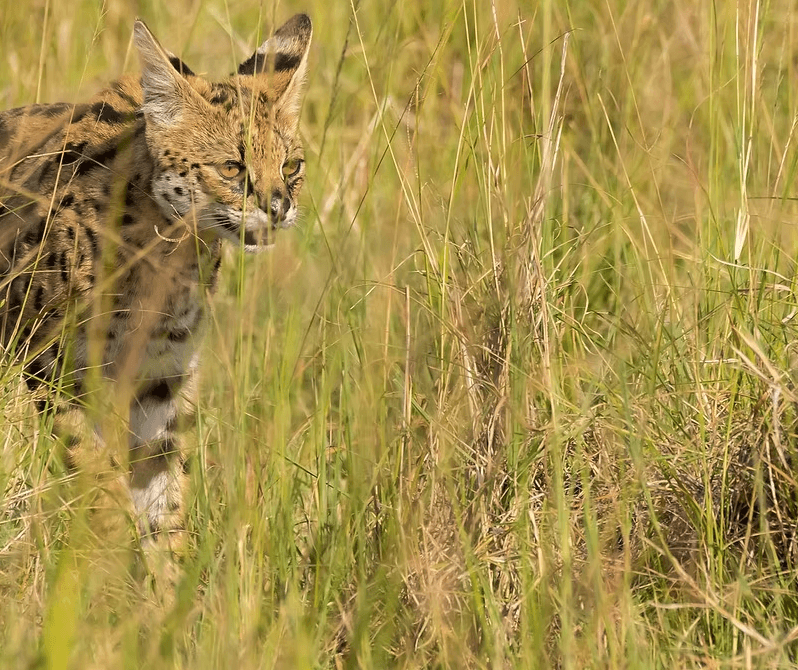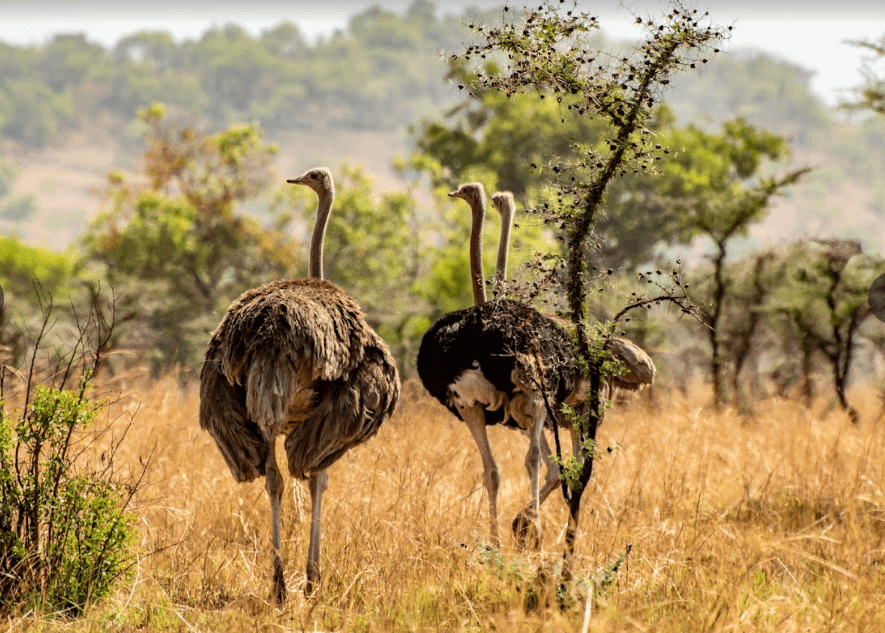The 8 Top Bird Watching Destination in Uganda
Top 8 Bird Watching Destinations in Uganda
Uganda, often celebrated as the “Pearl of Africa,” offers a kaleidoscope of bird species, making it an exceptional destination for bird enthusiasts. With over 1,000 bird species, some of which are endemic to the region, Uganda’s diverse ecosystems serve as ideal habitats for a variety of avian life. Here, we explore the top eight bird-watching destinations within Uganda, focusing on some of the country’s most renowned spots like Mabamba Bay, Kibale National Park, Queen Elizabeth National Park, Rwenzori Mountains, and Bwindi Impenetrable Forest.
1. Mabamba Bay Wetland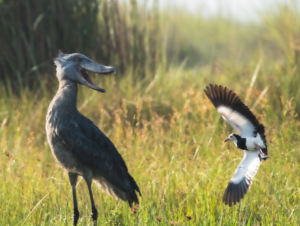
Located on the fringes of Lake Victoria, Mabamba Bay is accessible from Entebbe and is one of the best places in the world to spot the elusive Shoebill Stork. This expansive wetland offers a pristine habitat teeming with papyrus, reeds, and water lilies, creating a perfect ecosystem for not only the Shoebill but also other water birds. Visitors can explore the swamp in a traditional canoe, guided by experienced locals who know the best spots to catch a glimpse of this prehistoric-looking bird along with African Jacanas, Pied Kingfishers, and Malachite Kingfishers.
2. Kibale National Park
Kibale is predominantly known for its population of chimpanzees but its birding is equally impressive with about 375 species recorded. The park’s diverse habitats, including tropical rainforests, grasslands, and swamps, make it an ideal birding destination. Noteworthy species here include the Green-breasted Pitta, African Pitta, Abyssinian Ground Thrush, and the Crowned Eagle. The guided forest walks provide opportunities to see several primate species alongside the avian population, making for a thrilling dual-focus wildlife experience.
3. Queen Elizabeth National Park
This biodiverse park is famous for its wildlife, including lions, hippos, and elephants, but its bird life is particularly rich with over 600 species recorded here. The park’s extensive savannahs, wetlands, and forests provide homes to a variety of birds including the Martial Eagle, African Skimmer, and Pink-backed Pelican. The boat trips along the Kazinga Channel offer unique opportunities to observe water birds in their natural habitat, while the savannah areas are excellent for sighting raptors and grassland birds.
4. Rwenzori Mountains National Park
The fabled “Mountains of the Moon” not only offer some of the most breathtaking scenery in Uganda but are also a hotspot for highland bird species. Bird watchers can encounter several Albertine Rift endemics such as the Rwenzori Turaco, Handsome Francolin, and Montane Nightjar. The various trails through montane forest and alpine vegetation provide varied birding encounters, enhanced by the dramatic backdrop of snow-capped peaks and lush valleys.
5. Bwindi Impenetrable Forest
Best known for its Mountain Gorillas, Bwindi also provides a sanctuary for over 350 bird species, including 23 endemics. The forest’s dense cover and rugged terrain make it an exciting, though challenging, birding venue. Species such as the African Green Broadbill, Blue-headed Sunbird, and Handsome Francolin are some of the highlights. Birding in Bwindi is often combined with gorilla trekking, offering a rare chance to see some of the most iconic wildlife in Africa.
6. Budongo Forest
Situated in the north-western part of the country, Budongo Forest is renowned for its biodiversity. This conservation area, part of Murchison Falls Conservation Area, harbors about 366 bird species. The Royal Mile, a well-known birding stretch within the forest, allows for relatively easy viewing of a variety of species including the Yellow-footed Flycatcher, Ituri Batis, and Uganda Woodland Warbler. The forest’s canopy walks add an extra dimension to bird watching, providing an aerial view of the forest life.
7. Semuliki National Park
This unique park features a stretch of easternmost Ituri rainforest, creating a habitat that extends the range of many Central African bird species into East Africa. Semuliki is home to about 441 bird species, with several Congo Basin endemics like the Congo Serpent Eagle and Long-tailed Hawk. Birding here can be exceptionally rewarding due to the park’s diverse ecosystems, which include tropical rainforests, wetlands, and savannahs.
8. Lake Mburo National Park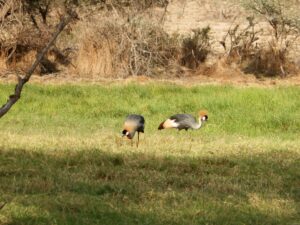
While it is one of Uganda’s smaller national parks, Lake Mburo is densely packed with a variety of bird species, totaling over 350. The park’s mosaic of habitats—dry hillside, rocky outcrops, bushy thickets, open and wooded savannahs, and lakes—support a diverse array of birds. Notable species include the African Finfoot, Papyrus Gonolek, and Brown-chested Lapwing. The boat trips on Lake Mburo are particularly good for spotting water birds and the surrounding swamps.
Each of these destinations offers a unique bird watching experience, set against the backdrop of Uganda’s stunning natural landscapes. Whether you are a seasoned ornithologist or a casual nature lover, Uganda’s birding sites provide a captivating glimpse into one of the world’s most vibrant avian populations.
Special Tips for Bird Watchers in Uganda
Optimal Times for Bird Watching
The best time for bird watching in Uganda is during the dry seasons, which run from December to February and June to August. These periods offer easier trekking conditions in the forests and clearer viewing conditions. However, the wet seasons, from March to May and September to November, can also be incredibly productive, especially for viewing migratory species and enjoying the lush scenery.
Guided Tours
Most bird watching expeditions benefit from the expertise of local guides who are familiar with bird calls, behaviors, and hidden nesting spots. Guides are essential not only for locating specific bird species but also for navigating the sometimes challenging terrain of Uganda’s wilderness areas.
Equipment to Bring
Bird watchers should equip themselves with a pair of quality binoculars and a field guide to East African birds. Additionally, wearing the right attire is crucial—lightweight, breathable, and preferably in colors that blend with the natural environment. A waterproof jacket, sturdy hiking boots, and a hat for sun protection are also advisable.
Conservation and Respect for Wildlife
Visitors are encouraged to practice responsible bird watching by maintaining a respectful distance from all wildlife, sticking to designated trails, and avoiding loud noises or sudden movements that could disturb the birds. Supporting eco-friendly tours and services also helps promote sustainable tourism, which benefits both the wildlife and local communities.
Why Uganda is a Bird Watcher’s Paradise
Uganda’s position along the equator and its varied ecosystems provide a perfect mix of tropical, forest, and savannah species, making it one of the most biodiverse regions for bird life in Africa. The presence of both East African and Central African birds in areas like Semuliki National Park, along with numerous endemics in the Albertine Rift, like in Bwindi and Rwenzori, makes Uganda a particularly special destination for bird watching.
From the swampy havens of Mabamba Bay to the ancient forests of Bwindi and the soaring peaks of the Rwenzori Mountains, Uganda offers an array of bird watching experiences that are as varied as they are memorable. Each park and sanctuary provides a unique glimpse into the world of some of the most spectacular birds on the planet. Whether you are trekking through dense forests or gliding in a boat across a tranquil lake, the thrill of spotting rare and exotic birds in their natural habitats is an unparalleled experience. Uganda’s rich avian diversity invites both the seasoned birder and the curious traveler to explore its vibrant wilderness, making it a true haven for bird enthusiasts from around the globe.
Uganda Tours
- 2 Days Uganda Birding Safaris
- 3 Days Gorilla and Golden Monkeys Tour
- 3 Days Bwindi Gorilla Trekking Safari
- 4 days Murchison Falls Safari
- 4 Days Queen Elizabeth Wildlife Safari
- 4 Days Kidepo wildlife Tour
- 5 Days Uganda Gorillas and Chimpanzee Wildlife Safari
- 5 Days Murchison Falls Safari
- 5 Days Queen Elizabeth Safari
- 5 Days Uganda Primates Safari
- 7 Days Bwindi Gorilla Trek & Wildlife Uganda
- 10 Days Uganda wildlife and Primates Safari
Related Tours
No tours found.

